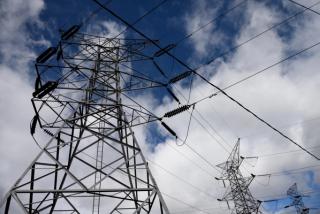
SLR supports environmental approval of the Kimal – Lo Aguirre project in Chile
- Post Date
- 27 November 2025
- Read Time
- 3 minutes

SLR Chile was part of the team in charge of preparing the Environmental Impact Study, while Geobiota contributed its biodiversity and natural heritage expertise for the most extensive electricity transmission project in the country.
The Environmental Assessment Service (SEA) has approved the "Kimal – Lo Aguirre HVDC Electric Transmission Line" Project, the first direct current (HVDC) power transmission line in the country that will connect the Antofagasta and Metropolitan regions.
With an estimated investment of up to US$ 1,480 million, the Kimal – Lo Aguirre Connection project includes a 1,346-kilometer-long line, through five regions and a capacity of 3,000 MW, positioning itself as a strategic pillar for Chile's energy transition.
In this milestone national energy infrastructure project, SLR Chile—through the recently acquired environmental consultancy SGA—and Geobiota played key roles in the preparation and processing of the Environmental Impact Study (EIA), approved by the SEA.
SLR provided technical advice for the preparation of the Environmental Impact Study (EIA), a role that included the overall coordination of the study, the development of environmental baselines in areas such as air quality, noise, hydrology, archaeology, paleontology, and the human environment, as well as the conduct of more than 50 anthropological studies focused on Indigenous peoples. In addition, the SLR team carried out advanced modelling of atmospheric emissions, noise, electromagnetic fields and luminosity, assessed environmental impacts and designed mitigation, compensation and monitoring measures. Environmental management plans, contingency plans and sectoral permits were also developed, thus consolidating a rigorous and multidisciplinary technical approach.
Geobiota, a Chilean consulting firm specializing in biodiversity and natural heritage, was responsible for the survey of the baseline of soils and terrestrial ecosystems, covering key components such as fauna, insects and flora. Their work identified sensitive areas, including native preservation forests, threatened species, and habitats relevant to wildlife, providing critical information for environmental decision-making.
Additionally, Geobiota designed the Biodiversity Loss Compensation Plan and defined specific measures for the protection, mitigation and compensation of impacts on vegetation formations, soils and fauna. The work included the preparation of environmental permits linked to biodiversity, aligned with ecological conservation standards.
"This project represents an unprecedented technological and environmental advancement. Having contributed to the environmental assessment of the largest project submitted to the SEIA and whose implementation is key to meeting the decarbonization goals fills us with pride," said Mauricio Venturin, Regional Managing Director of SLR Chile.
Carlos Prado, director of Geobiota added: "Our approach was to ensure that energy development is compatible with the conservation of biodiversity and the minimization of impacts on the territories. The combination of SLR's global reach and the combined local knowledge of SGA and Geobiota was undoubtedly key in meeting this challenge."
With the Environmental Qualification Resolution (RCA) now obtained, the project will begin the processing of sectoral permits to promptly begin its construction under strict compliance with applicable regulations and environmental commitments.

